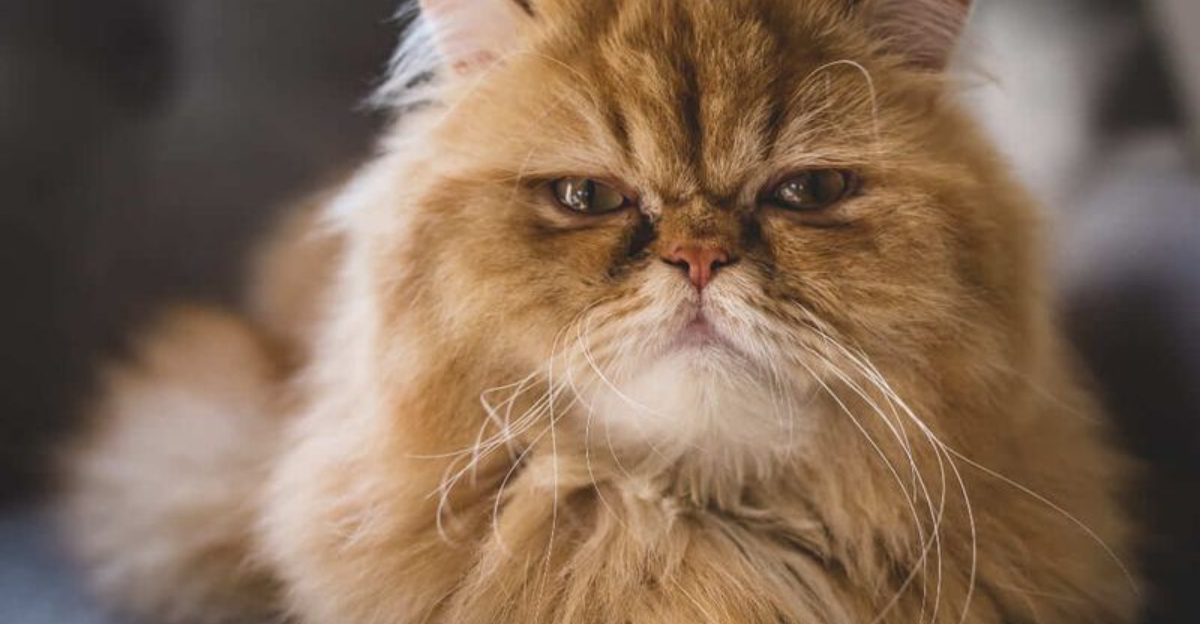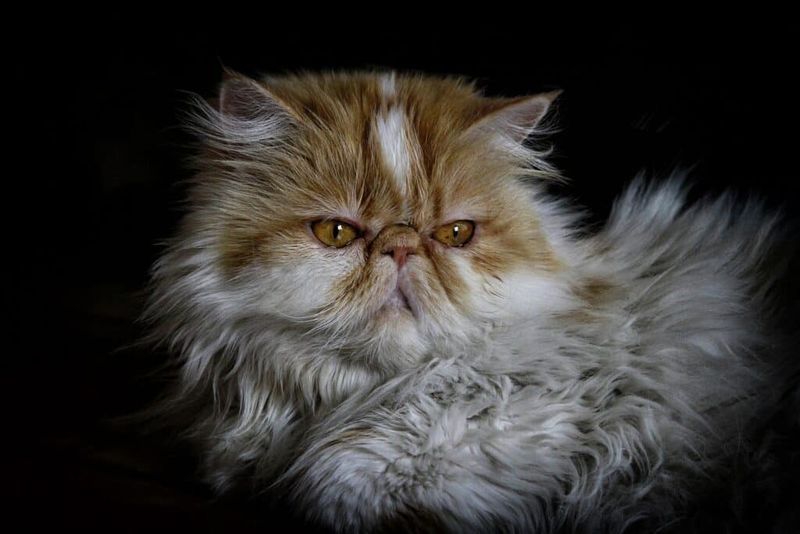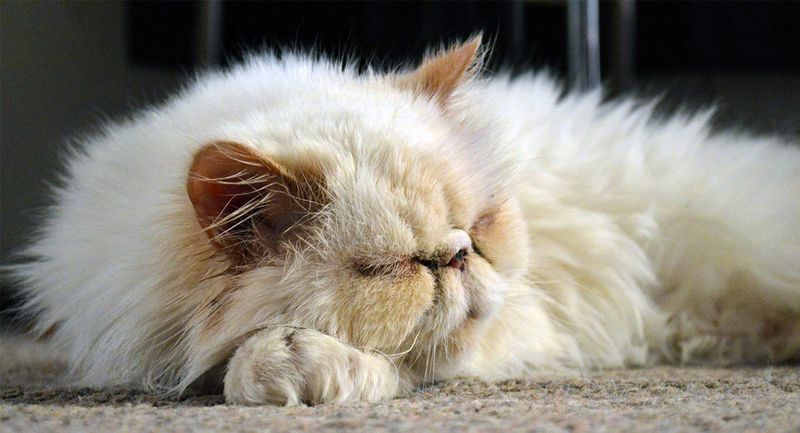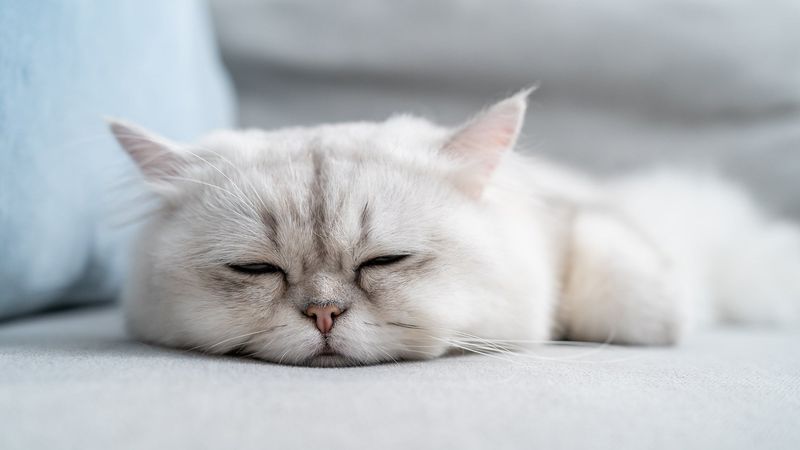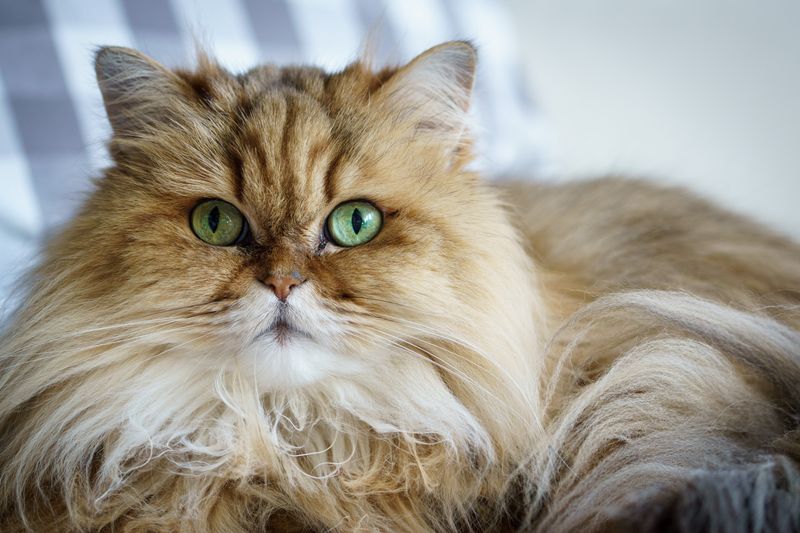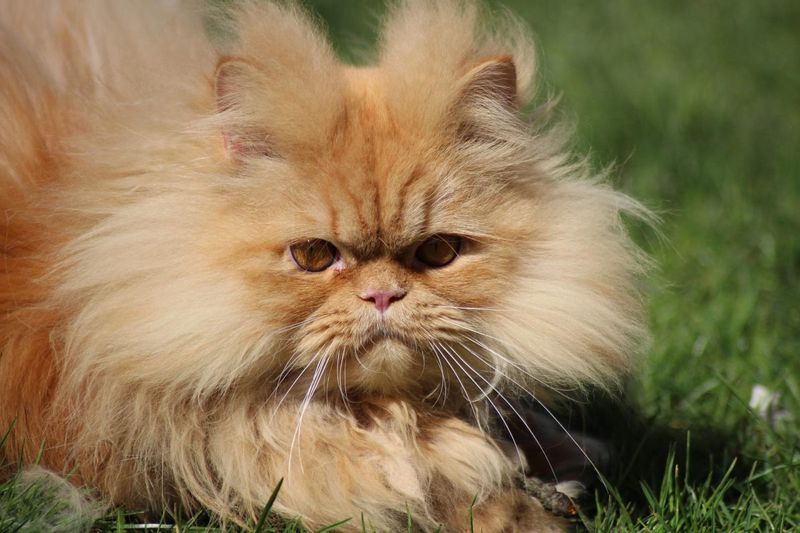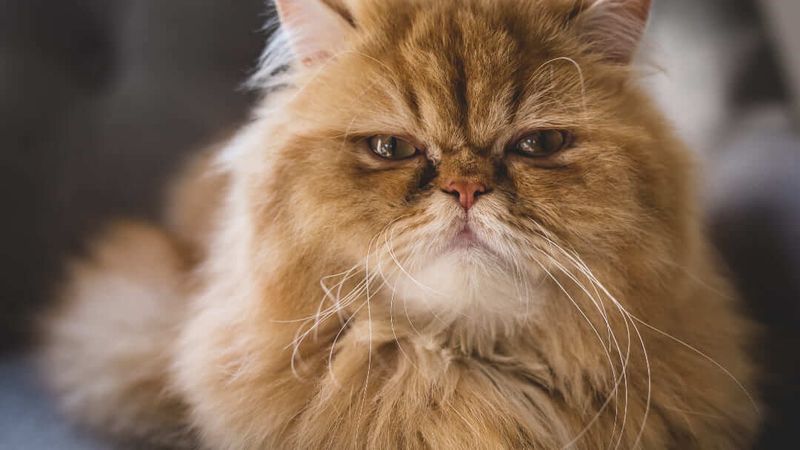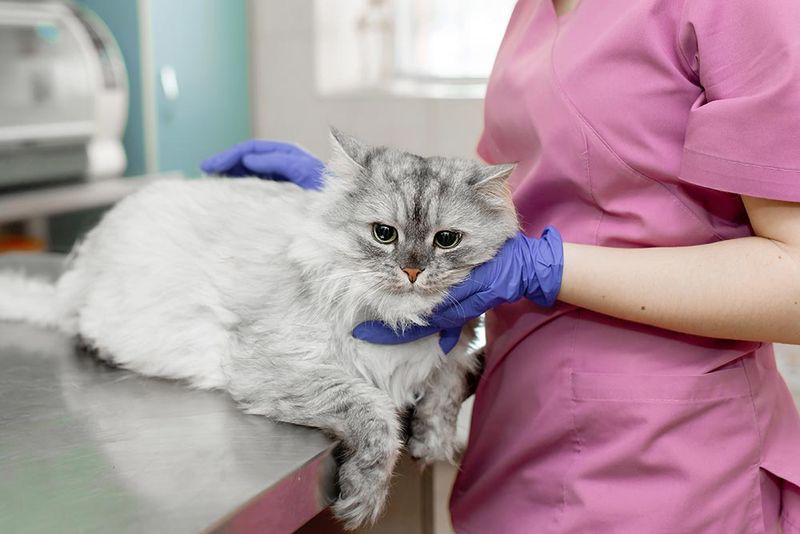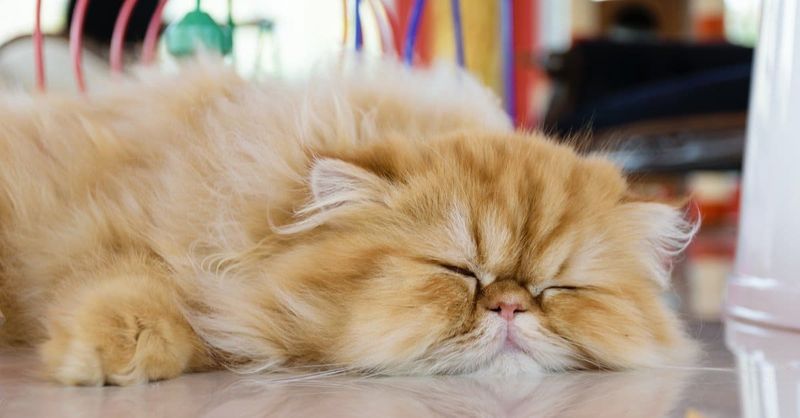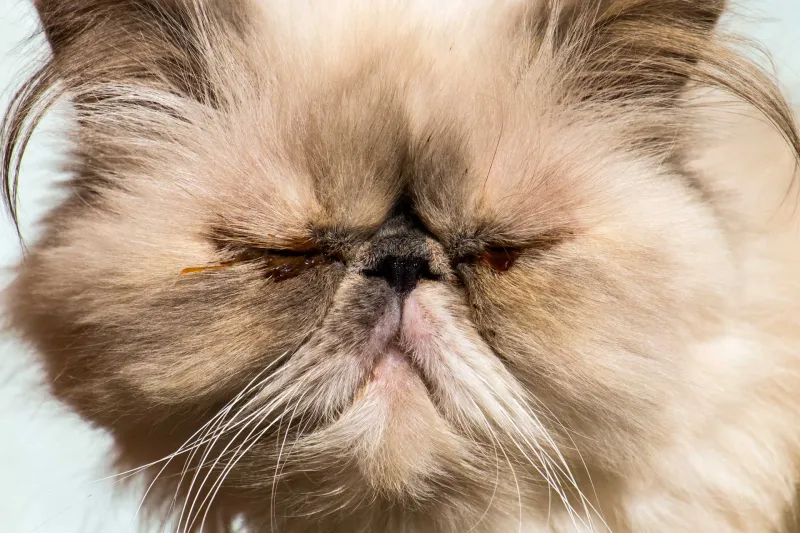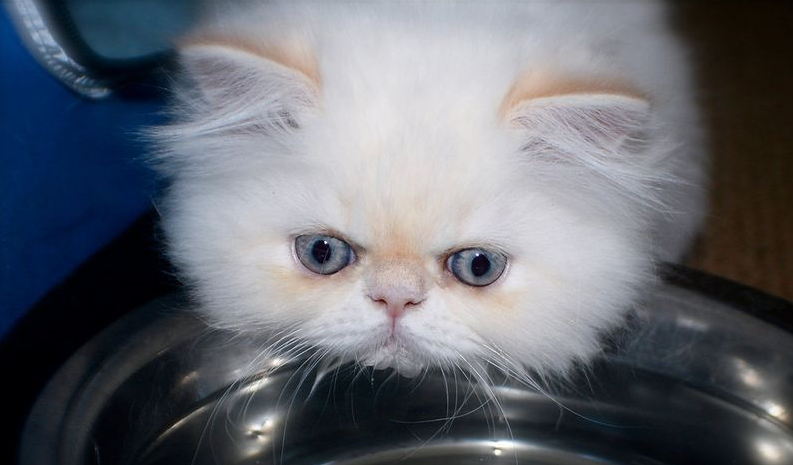📖 Table of Content:
Among the most elegant and beloved cat breeds, Persian cats are instantly recognizable for their luxurious coats and distinctively flat faces. However, this iconic appearance is the result of selective breeding for brachycephaly—a skull structure that can predispose these cats to a variety of health issues, particularly affecting the respiratory system. One of the most concerning of these conditions is Brachycephalic Airway Syndrome (BAS), a cluster of anatomical abnormalities that obstruct airflow and cause chronic breathing problems.
While Persian cats may appear calm and low-energy, owners often overlook or misinterpret signs of respiratory distress. Because BAS symptoms range from subtle to severe, understanding what to look for is crucial for early detection and effective management. This condition can significantly impact a cat’s quality of life, making it essential for caregivers to recognize the warning signs and seek appropriate veterinary care.
The following sections detail ten common signs of Brachycephalic Airway Syndrome in Persian cats. Each symptom carries its own implications for your cat’s health and well-being. Whether you’re a current owner or considering adding a Persian to your family, being informed about these signs can help ensure a healthier, more comfortable life for your feline companion.
1. Noisy Breathing (Stridor or Stertor)
Often, one of the earliest signs of BAS is the presence of noisy breathing, which may sound like snorting, snoring, or wheezing. These sounds, medically referred to as stertor (low-pitched) and stridor (high-pitched), usually result from obstruction in the nasal passages or throat. When a Persian cat is at rest or asleep, these sounds become more pronounced due to relaxed airway muscles. Owners may assume these noises are normal for the breed, but they often signal underlying anatomical issues like narrow nostrils or an elongated soft palate. Even mild cases of noisy breathing indicate that the cat is working harder than it should to breathe. Over time, this can lead to fatigue, stress, and even secondary health complications. Persistent noisy breathing should always prompt a consultation with a veterinarian familiar with brachycephalic breeds.
2. Labored or Open-Mouth Breathing
Unlike most cats, Persian cats with BAS may frequently be seen breathing through their mouths, a behavior that is usually abnormal in felines. This open-mouth breathing indicates significant airway resistance, forcing the cat to use alternate routes to draw in air. While resting, the cat may exhibit visible chest movements, neck extension, or even flaring of the nostrils in an attempt to improve airflow. These signs often worsen during periods of excitement, stress, or warm temperatures. In some cases, open-mouth breathing may resemble panting, which is an emergency sign in cats. Long-term oxygen deprivation can strain the heart and lungs, leading to further complications. Observing these signs early can help avoid medical crises that might otherwise go unnoticed.
3. Exercise Intolerance
Daily activity that seems minimal for other cats—such as climbing, playing, or chasing a toy—may leave a brachycephalic Persian visibly exhausted. They often become lethargic or disinterested in physical engagement simply because their bodies can’t keep up with oxygen demand. This condition forces them to rest more frequently or withdraw from typical feline behaviors like exploration and hunting play. The inability to tolerate even mild exertion can also affect muscle tone and weight management. Owners might misread this behavior as laziness or a calm temperament, but it’s often a sign of chronic respiratory strain. In some cases, the cat may pause during play to lie down and breathe heavily, which is a strong indicator of compromised airway function. Monitoring your cat’s physical responses to activity can reveal more than their personality—it can reflect their respiratory health.
4. Heat Sensitivity
During warmer months, Persian cats with BAS are at heightened risk for heatstroke due to their compromised ability to regulate body temperature. Panting, which helps dissipate heat in dogs, is far less effective in cats, and particularly ineffective in brachycephalic breeds. Their narrowed airways reduce airflow, making it harder to cool off through the mouth or nose. You might notice excessive drooling, restlessness, or hiding behavior when temperatures rise, all of which can point to overheating. Without prompt cooling, these cats can suffer from heat exhaustion or even collapse. Preventative measures like keeping them indoors with air conditioning and avoiding activity in hot weather are essential. Recognizing your cat’s heat sensitivity is vital in maintaining their safety during seasonal changes.
5. Frequent Snoring
Snoring in Persian cats can often be charming or amusing to owners, but it’s frequently a sign of restricted airflow while sleeping. This sound typically originates from vibration of the soft palate or nasal tissue due to narrow or blocked passages. Snoring may also occur when the cat is awake but relaxed, especially if lying in certain positions that worsen airway collapse. While many brachycephalic cats snore, persistent or loud snoring is an indicator that the airway resistance is significant. This ongoing disruption can prevent deep, restorative sleep, leading to fatigue or irritability. In the long term, sleep disturbances can also contribute to other health problems such as weakened immunity or behavior changes. Rather than dismissing snoring as breed-normal, it’s worth discussing with a vet during regular checkups.
6. Gagging or Vomiting
Episodes of gagging, retching, or vomiting without an obvious cause may stem from the anatomical features of Brachycephalic Airway Syndrome. Elongated soft palates can obstruct the throat, especially during swallowing, causing discomfort or reflexive gagging. The build-up of pressure during labored breathing can also lead to gastrointestinal reflux, further irritating the esophagus. You might notice your cat hacking without producing a hairball, or regurgitating food shortly after eating. These issues not only reduce the cat’s comfort but can also lead to dehydration and weight loss if persistent. Over time, chronic vomiting may damage the throat and contribute to aversions to eating. Veterinary assessment is crucial to rule out other gastrointestinal issues and address anatomical contributors.
7. Cyanosis (Bluish Gums or Tongue)
A sudden or intermittent bluish tint to your Persian cat’s gums or tongue is a severe and urgent indicator of inadequate oxygen supply. This symptom, known as cyanosis, usually occurs when oxygen saturation in the blood falls below safe levels. It can develop rapidly during episodes of stress, heat, or physical activity and often accompanies signs of respiratory distress. You may also observe the cat becoming limp or unresponsive in extreme cases. Cyanosis is not breed-specific and should never be dismissed; it’s an emergency requiring immediate veterinary intervention. Repeated occurrences could indicate advanced BAS and potential complications like heart failure. Regular monitoring of gum color, especially during stressful events, is a useful home check.
8. Collapse or Fainting
Periods of sudden collapse, fainting, or “wobbling” can occur in Persian cats with severe BAS due to transient loss of oxygen to the brain. These episodes may be triggered by excitement, overexertion, or overheating. The cat might fall over, appear dazed, or momentarily lose consciousness before recovering. Though brief, these events are alarming and signify dangerously low airflow and blood oxygen levels. Such signs often point to a need for surgical or medical intervention, like nostril widening or soft palate trimming. Delaying treatment could result in a critical emergency or permanent damage. Even a single collapse episode warrants urgent attention from a qualified veterinarian.
9. Nasal Discharge or Sneezing
A runny nose or persistent sneezing in Persian cats may not be due to allergies or infection alone—it could be a result of malformed nasal cavities caused by brachycephaly. The compact skull restricts proper drainage and airflow, making these cats more prone to upper respiratory irritation. Discharge may be clear or discolored, and sneezing fits can occur daily or even hourly. This symptom might coexist with congestion or eye discharge, creating the appearance of a chronic cold. While it may seem mild, ongoing inflammation can predispose the cat to infections and breathing complications. Maintaining a clean, allergen-free environment and seeking medical treatment for persistent symptoms can improve comfort and health.
10. Difficulty Eating or Swallowing
Some Persian cats with BAS show signs of trouble when eating, such as chewing slowly, dropping food, or coughing mid-meal. These difficulties are often due to the structural crowding in the mouth and throat, making it hard to coordinate breathing and swallowing. Over time, this can lead to food aversion, malnutrition, or weight loss. In some cases, cats may prefer soft food or refuse kibble altogether. It’s also possible for these cats to aspirate food or water into their lungs, leading to dangerous conditions like aspiration pneumonia. Owners might need to adjust feeding techniques or consult a veterinarian about corrective procedures. Monitoring mealtime behaviors can provide early clues to BAS-related complications.
